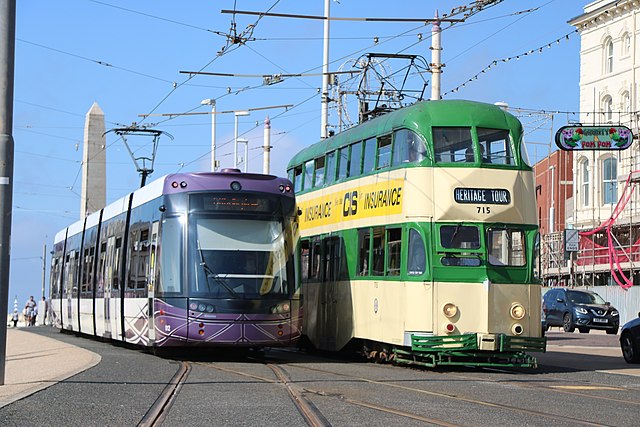Since you clarified, I think I have one or two somewhat weird contenders for your list.
The Molli in Bad Doberan–Heiligendamm–Kühlungsborn
This narrow-gauge railway is about 15 km long. It is run with steam trains that leave from a dedicated platform at Bad Doberan mainline station and for a lot of its path runs through rural countryside towards the seaside towns of Heiligendamm (known for the G8 summit in 2007 and its posh seaside hotel) and Kühlungsborn. On the Kühlungsborn end, it does run along and over a street or two for part of its journey.
The main reason for adding it to your list, however, is the part through Bad Doberan, where it connects through the town centre, through pedestrianised streets and streets with car traffic just like a regular tram. There are two stops in town. At one, you board the train at street level, iirc, the other one has curbside access level with the bottom steps of the heritage cars.


(Clicking on images opens a larger version)
The Molli is best accessed from Rostock central station (Hbf) in the North-East of Germany (Mecklenburg-Vorpommern), taking a local train to Bad Doberan station and boarding right there. It was included in the €9 ticket last summer so I am assuming it will be included in the €49 ticket subscription that you can buy this summer.
The Nordhausen tram which continues to Ilfeld Neandertalklinik
This is more of a classic tram, especially since it connects to the proper tram network of (small town) Nordhausen in Thuringia. One line of this tramway though continues out of town northbound into the Harz hills (or mountains but to me they are too low to qualify as mountains). Regular service extends to Ilfeld Neandertalklinik on a single-track non-electified metre gauge railway line.
At Nordhausen station, trams from the town to Ilfeld arrive using electric power, turn on their diesel engine, retract their pantograph and diesel out North. On the return journey, the opposite happens.


(Pictures link to larger versions)
If you are so inclined, the route to Ilfeld directly connects to the remainder of the Harz Narrow Gauge railway system (Harzer Schmalspurbahnen). They run steam-powered trains and sometimes diesel-powered railcars to Wernigerode, the top of the Brocken hill (1141 m above sea level) and Quedlinburg.
Their railcars also connect to Nordhausen tram at the station square stop, but I am not sure if they also continue into town. Railcar pictured below at Eisfelder Talmühle station.

This railway and tramway was also included in last summer’s €9 ticket so I assume it will be included in the upcoming €49 ticket. Nordhausen station is a connecting hub with lines to Erfurt, Göttingen or Kassel (both ICE connection) and Halle (Saale).





















